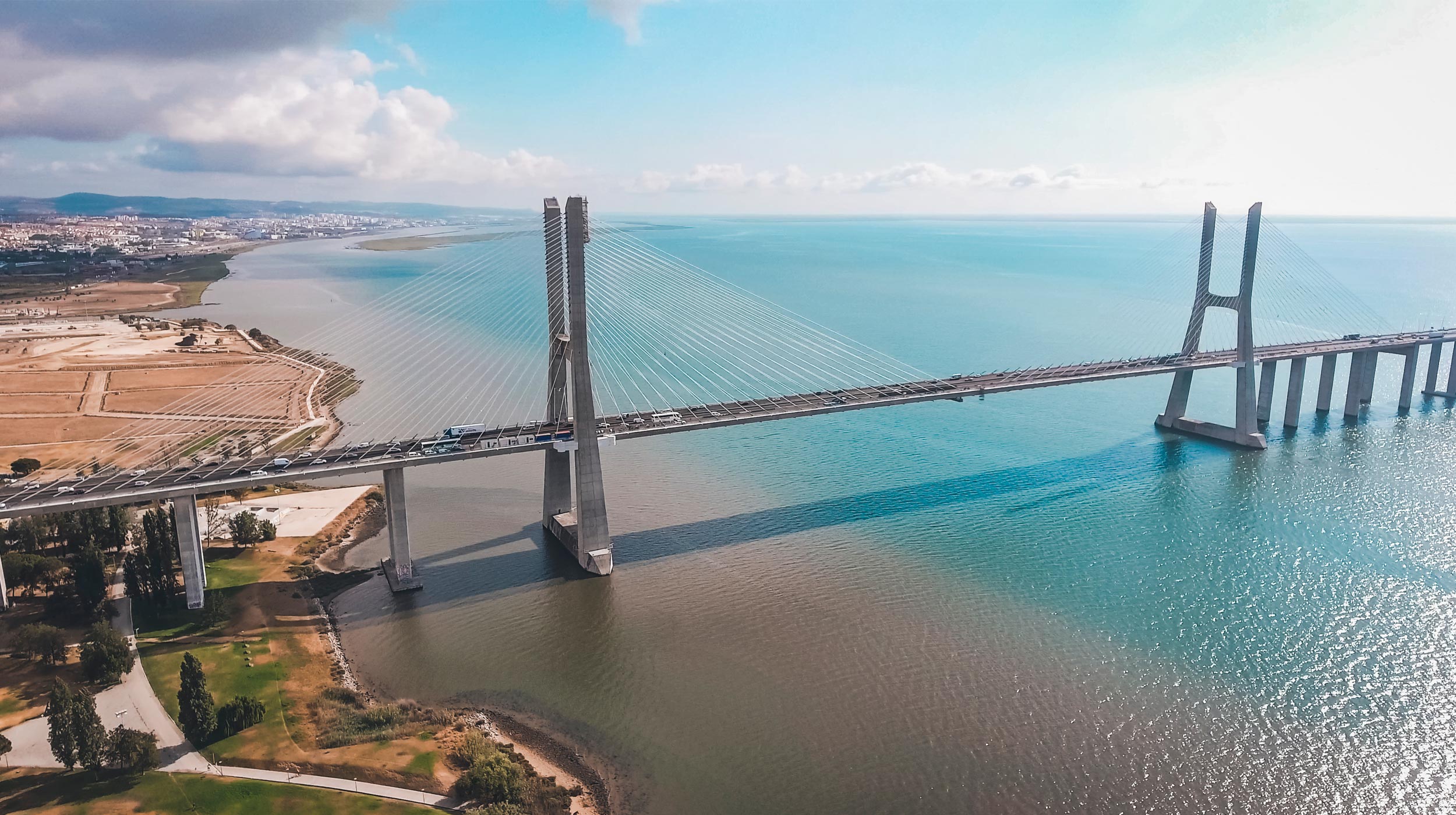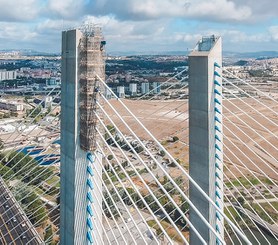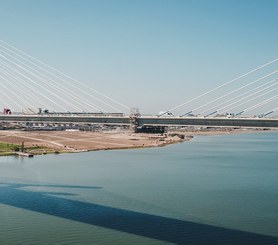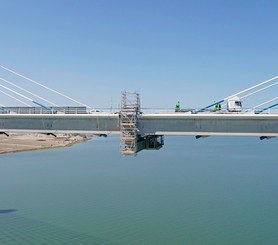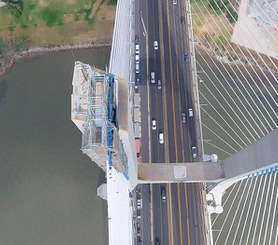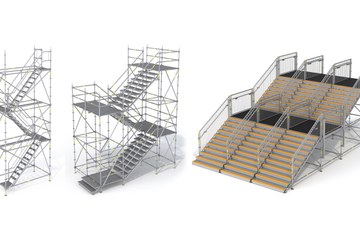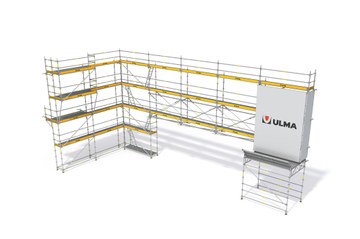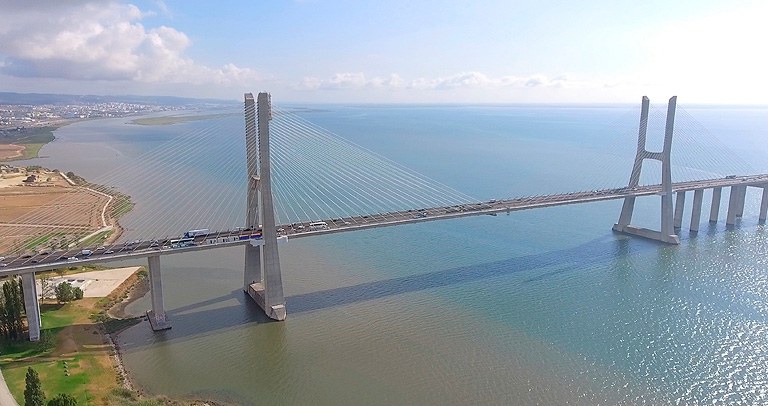Description
The Vasco da Gama Bridge is a cable-stayed bridge over the Tagus River connecting the municipality of Alcochete with Lisbon, Portugal. At over 17.3 km, it is the second longest bridge in the European Union.
The two main pylons stand at 150 metres high. The above-bed pier structure, on which the bridge is founded, is designed to withstand the impact of ships of up to 30,000 tonnes travelling at a speed of 12 knots. It can also withstand winds of up to 250 km/h, and was designed to withstand an earthquake four times bigger than the one that struck Lisbon in 1755.
ULMA solution
The project in which ULMA has participated consisted of creating access systems to the stay cables at the top of the pillar and access to the bottom of the board to allow the replacement of certain stay cables damaged by a traffic accident. It was also responsible for staff training, inspections, assembly and disassembly of the scaffolding. The Bridge concessionaire is Lusoponte and it’s been carried out by Freyssinet.
The complexity of the project lies in the creating access for the specialised personnel at four major points for the replacement, dismantling and installation of the new stay cables, namely inside the pylon, outside the pylon, above the deck and below the deck. This required safe accesses or connections to the bridge's existing maintenance access.
Two points of particular importance in this project were the exterior of the pylon and the access under the pylon. The preliminary work had to be carried out in the free area of the carriageway, which is 6 metres, taking into account that it is not possible to use heavy equipment such as very powerful cranes to erect the scaffolding outside the pylon, which is 100 m above the carriageway.
“For this reason, we turned to ULMA's BRIO modular scaffolding, firstly because of its flexibility, secondly because of its lightweight modular elements, and thirdly because it is a certified system. All of this had to be assembled and mounted from the existing bridge stockpiles in particular within the pylon or stockpiles used for bridge maintenance. So the scaffolding was assembled outside the pylon, to later place the cantilever scaffolding and anchor it on the outside of the pylon to the wall face”, Patrick Ladret, International Business Director, Freyssinet, said.
The erection process of ULMA modular scaffolding started from the upper part of the pylon, at a height of 150 m, and from there it descended approximately 20 m to the last stay cable.
As this was a top-down assembly at a considerable height, the safety of all involved and of third parties was vital, as the traffic on the bridge was still in operation. This situation was always present in the project development to guarantee safety and the correct functioning and application of the scaffolding for the planned works.
“The project required a special design, as there were two particularities: the height and the wind. The scaffolding was fully encapsulated to allow personnel to work on the upper part outside the pylon in complete safety, guaranteeing that no objects fell onto the carriageway at any time. As the scaffolding was highly exposed to winds, several load scenarios were calculated for all structures to ensure their proper functioning, given the demanding conditions to which the scaffolding was subjected”, Patrick Ladret said.
The deck-mounted structure for access to the bottom part also consisted of a BRIO Multidirectional Scaffolding structure with a tower at the top of the deck. The rest of the structure was suspended 6 m below deck level to allow access to the working area.
To ensure the correct prevention and monitoring of the possible risks inherent to these assembly tasks, they were carried out by a specialised team, guaranteeing the correct application of the BRIO scaffolding in complete safety.

